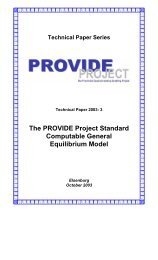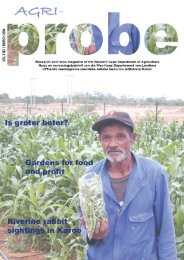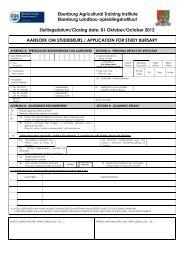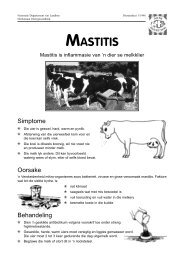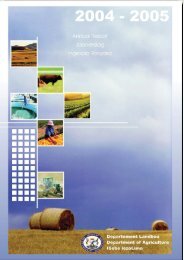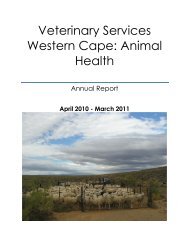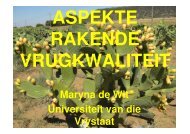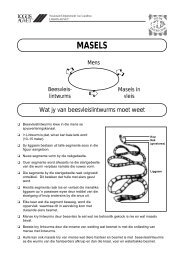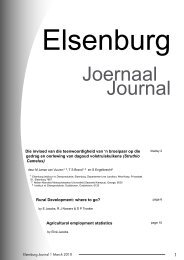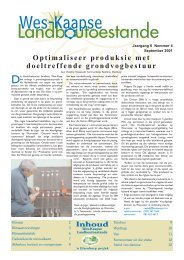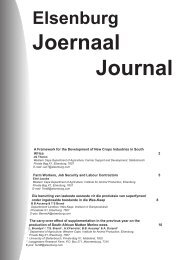honey bush tea - Department of Agriculture: Western Cape
honey bush tea - Department of Agriculture: Western Cape
honey bush tea - Department of Agriculture: Western Cape
You also want an ePaper? Increase the reach of your titles
YUMPU automatically turns print PDFs into web optimized ePapers that Google loves.
In recent years, with the increasing economic pressure on agriculture, there has been a<br />
greater use <strong>of</strong> cost accounting techniques which result in net margin or pr<strong>of</strong>it per<br />
enterprise. In cost accounting or complete enterprise costing, not only are the outputs<br />
and variable costs allocated to individual enterprises, as for gross margins, but the fixed<br />
costs are also allocated. This results in a net pr<strong>of</strong>it per enterprise and, with all costs<br />
allocated, enables the calculation <strong>of</strong> costs per ton produced on the farm and break-even<br />
budgets. The strength <strong>of</strong> such techniques is that they help to identify all costs involved<br />
in a particular enterprise (Firth, 2002).<br />
Despite their apparent simplicity, however, the full cost approach is fraught with<br />
difficulties. Awkward and sometimes arbitrary decisions have to be made concerning<br />
the allocation <strong>of</strong> overhead expenses between enterprises (Barnard and Nix, 1979). But<br />
the net margins are used in this study, as they are assumed to give full coverage <strong>of</strong> an<br />
enterprise concerned.<br />
3.4.1 Enterprise budget analysis<br />
The information presented in Table 7 was obtained through informal interviews with<br />
commercial and small-scale farmers involved in <strong>honey</strong><strong>bush</strong> production. Unlike the other<br />
studies, an attempt to give a closer to a real situation <strong>of</strong> <strong>honey</strong><strong>bush</strong> production is made,<br />
as most <strong>of</strong> the information in the budgets is a reflection <strong>of</strong> actual production. The<br />
advantage being the experience and the period since <strong>honey</strong><strong>bush</strong> farmers have been<br />
engaged in production. However, it is not common to conduct economic analysis<br />
without any assumptions.<br />
Therefore the base scenario, i.e. yields, costs breakdown presented in Table 7 is taken<br />
from the enterprise budgets that are part <strong>of</strong> the appendices. The gross income varies<br />
according to the yield and price while the yield could be manipulated according to size<br />
<strong>of</strong> production. However, discussions with various producers and researchers led to the<br />
following assumptions:<br />
One hectare is available and is used as a unit <strong>of</strong> analysis in this study<br />
Productive life expectancy <strong>of</strong> the plant is projected to be five years, but could be<br />
longer depending on a species. However, calculations in this study are for year<br />
31



